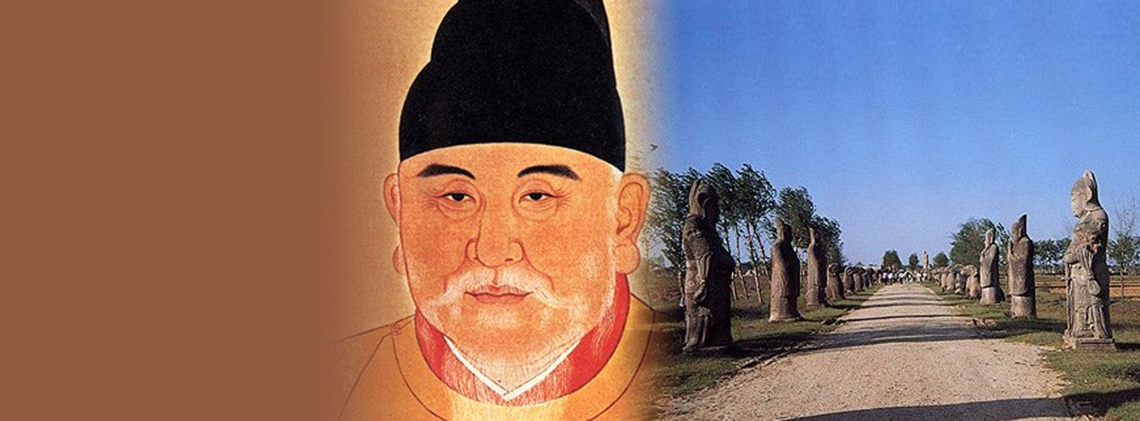
Summer Palace
Splendid
Chi Culture
Topic
Summer Palace
Located in the northwestern suburbs of Beijing, the Yihe yuan (Garden of nurtured harmony), generally known in English as the Summer Palace, dates to the fifteenth year (1750) of the Qing dynasty Qianlong reign (1736–1795). Originally known as Qingyi yuan (Garden of clear ripples), it is a prime example of Qing dynasty (1644–1911) imperial garden architecture.
The Summer Palace has several noteworthy structures. Its “Long Corridor” is the longest painted corridor in the world; the Seventeen-Arch Bridge is the biggest bridge with connected and different arches in any pre-modern Chinese garden; the exquisite Jade Belt Bridge is made of white marble and other stone of light blue-green hue; within the Dehe yuan (Garden of virtuous harmony) is the largest (three stories) pre-modern opera house extant in China; the Baoyun ge (Pavilion of precious clouds), made of bronze is regarded as a marvel of ingenuity; the Boat of Purity and Ease, better known as the “Marble Boat” or “Stone Boat,” is a famous waterside pavilion; its “Suzhou Street” captures the local color of a shopping street located on both sides of a river, a characteristic of the greater Yangtze Delta, specifically the area referred to as Jiangnan (south of the Yangtze River) although it actually includes places north of the river, primarily in Jiangsu and Zhejiang provinces. This is where Suzhou is located. These and other constructions within the Summer Palace showcase China’s unique architectural styles within the framework of its distinctive garden design tradition.
In 1998, the United Nations Educational, Scientific and Cultural Organization inscribed the Summer Palace on its World Heritage List.
The Summer Palace occupies about 290 hectares of land, with its architectural structures covering about 70,000 square meters. It has three major areas: the court area for political activities; the residential area for living and entertainment; and the gardens and temples for ambling about enjoying nature and sights, and worship. Inside the Eastern Palace Gate, the main entrance to the palace, was situated the Renshou dian (Hall of benevolence and longevity). This was where Empress Dowager Cixi (1835–1908) and the Guangxu emperor (r. 1875–1908) held court sessions. The Leshou tang (Hall of joy and longevity), the Yulan tang (Hall of jade billows), and Yiyun guan (Chamber of collecting books) were the living quarters of the empress dowager, the emperor, and the empress, respectively. Nearby within the Dehe yuan was the opera house. Areas suitable for appreciative meandering about included the Wanshou shan (Longevity hill), and Kunming Lake as well as the sections known as Hou shan (Back hill, where “Suzhou Street” among other gardens and pavilions was located) and Hou hu (Back lake).
In contrast to the original Qingyi yuan, which was a place for the emperor to visit—touring its sights and relaxing—the Yihe yuan (Summer Palace), as it was known after its reconstruction, combined palaces and garden and became a place where the emperor and empress dowager could run state affairs but also enjoy themselves. Reflecting this dual aspect of use in terms of architectural style, the Summer Palace is both magnificent and delicate, a fusion of grandeur and refinement.
The Qianlong emperor undertook six inspection tours of Jiangnan (1751–1784) and came to have great affection for the beautiful scenery and elegant gardens characteristic of the region. It was this and these which the Qingyi yuan was intended to evoke. Taking advantage of the site’s natural features—mountainous hills and various waters, and imitating and learning from Jiangnan gardens, a southern style garden was created in North China at the order of Qianlong. For example, its Huishan yuan (Huishan garden) was modeled after the Jichang yuan (Garden of delight conveying) at Huishan (Hui hill). In 1811 this imperial garden’s name was changed to the more familiar Xiequ yuan (Garden of harmonious pleasures). The six bridges along the West Causeway resemble the six bridges of the famous Su Causeway at the West Lake of Hangzhou, Zhejiang province. The Marble Boat was inspired by one of typical Yangtze pleasure boat form made of gray-black stones with wooden cabin called the “unmoored boat” by Qianlong when he saw it at the Xu yuan (named after its original owner) in Nanjing, Jiangsu province. The Wangchan ge (Pavilion of gazing at the moon) resembled the oft-destroyed and rebuilt Huanghe lou (Yellow crane tower) of Wuhan, Hubei province, and the Jingming lou (Bright view tower) resembled the Yueyang Tower of Yueyang, Hunan province. The “commercial street” (Suzhou Street) copied those along the waterways of Suzhou. In brief, many architectural features in this garden complex were built in imitation of others in southern China .
The palaces rest among green trees so they did not disturb the harmonious natural beauty of the entire garden. In terms of colors, most of the palace structures were built with red walls and yellow tiles, having the effect of “a single red in the midst of thick layered green” (an old Chinese saying). The lakeside handrails, the Seventeen-Arch Bridge, the Marble Boat, and other waterside architecture are all predominantly in white, providing a sharp contrast to the green-colored lake water.
Jiejing, known in English as “borrowed scenery,” is a distinctive technique of Chinese garden design utilized to create certain effect in constructing the Summer Palace. The basic concept is the incorporation of background elements into a scenery in a natural and pleasing manner to enhance the overall landscape. For example, when boating on the Kunming Lake, people view scenes not actually part of the Summer Palace but as far as the eye can see, to the Western Hills in the distance, not to mention the tall pagoda atop the nearby Yuquan shan (Jade spring mountain). Corridors and stone railings not only distinctively separate the lakes from mountains but link them as well. Natural scenery is matched with man-made structure to create a fully-realized vision of beauty.
Qing dynasty imperial gardens all possess Buddhist and Tibetan Buddhist structures. Foxiang ge (Tower of Buddhist incense) is the main building of the garden. Other notable examples include the Dehui dian (Hall of virtuous splendor), Paiyun dian (Hall of dispelling clouds), Paiyun men (Gate of dispelling clouds), and the “Archway of Glorious Clouds and Jade Eaves,” more familiar even in English by its Chinese name of “Yunhui yuyu” archway. All of these are grand masterpieces of pre-modern Chinese Buddhist architecture. In addition, as the Qing imperial family especially emphasized Tibetan Buddhism, certain buildings—the Zhihuihai (Sea of wisdom ) on Longevity Hill and the “Si da buzhou” (Four great regions) scenic spot at the Back Hill—were constructed in Tibetan Buddhist style. This special architectural feature is characteristic of Qing dynasty imperial gardens.







